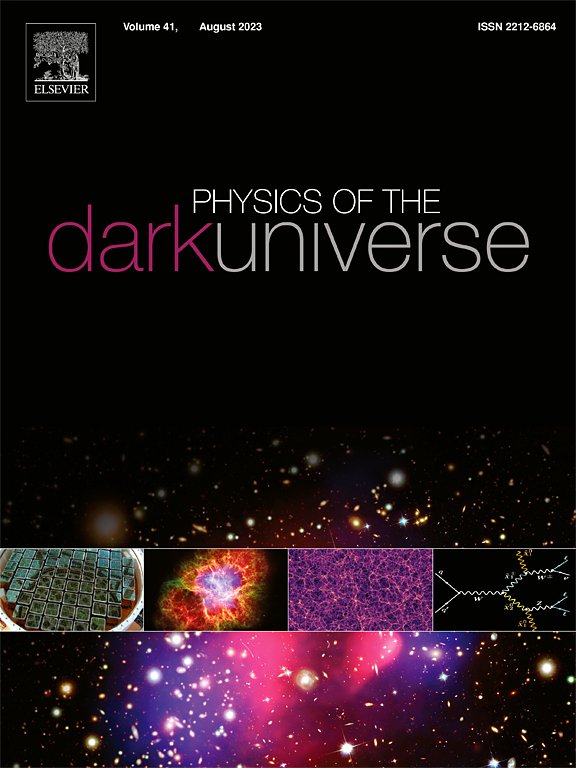Topological electroweak phase transition
IF 5
2区 物理与天体物理
Q1 ASTRONOMY & ASTROPHYSICS
引用次数: 0
Abstract
In this work we shall consider the effects of a non-trivial topology on the effective potential of the Standard Model. Specifically we shall assume that the spacetime topology is and we shall calculate the Standard Model effective potential for such a topological spacetime. As we demonstrate, for small values of the compact dimension radius, the electroweak symmetry is unbroken, but for a critical length and beyond, the electroweak symmetry is broken, since the configuration space of the Higgs field contains an additional energetically favorable minimum, compared to the minimum at the origin. The two minima are separated by a barrier, thus a phase transition can occur, via quantum tunneling, which mimics a first order phase transition. This is a non-thermal phase transition, similar possibly to quantum Hall topological phase transitions, hence in the context of this scenario, the electroweak symmetry breaking does not require a high temperature to occur. The present scenario does not rely on the occurrence of the inflationary era, only on the expansion of the Universe, however we briefly discuss the freezing of the superhorizon terms in spacetime, if inflation occurred. We also investigate the large scale differences of the gravitational potential due to the non-trivial topology. Finally, we briefly mention the distinct inequivalent topological field configurations that can exist due to the non-trivial topology, which are classified by the first Stieffel class which in the case at hand is , so even and odd elements can exist. We also briefly qualitatively discuss how a topologically induced electroweak phase transition can yield primordial gravitational waves.
拓扑电弱相变
在这项工作中,我们将考虑非平凡拓扑对标准模型有效势的影响。具体地说,我们将假设时空拓扑是S1×R3,我们将计算这种拓扑时空的标准模型有效势。正如我们所证明的,对于紧化维度半径的小值,电弱对称性是不被打破的,但对于临界长度及以上,电弱对称性是被打破的,因为希格斯场的构型空间包含了一个额外的能量上有利的最小值,与原点的最小值相比。两个最小值被一个势垒隔开,因此可以通过量子隧道发生相变,这模仿了一阶相变。这是一个非热相变,可能类似于量子霍尔拓扑相变,因此在这种情况下,电弱对称性破缺不需要高温发生。目前的场景不依赖于暴胀时代的发生,只依赖于宇宙的膨胀,然而我们简要地讨论了S1×R3时空中超视界项的冻结,如果暴胀发生了。我们还研究了由于非平凡拓扑而引起的引力势的大尺度差异。最后,我们简要地提到由于非平凡拓扑而可能存在的不同的不等价拓扑场构型,它们由第一个Stieffel类分类,在手边的情况下是H1(S1×R3,Z2 ~)=Z2,因此偶元素和奇元素可以存在。我们还简要定性地讨论了拓扑诱导的电弱相变如何产生原始引力波。
本文章由计算机程序翻译,如有差异,请以英文原文为准。
求助全文
约1分钟内获得全文
求助全文
来源期刊

Physics of the Dark Universe
ASTRONOMY & ASTROPHYSICS-
CiteScore
9.60
自引率
7.30%
发文量
118
审稿时长
61 days
期刊介绍:
Physics of the Dark Universe is an innovative online-only journal that offers rapid publication of peer-reviewed, original research articles considered of high scientific impact.
The journal is focused on the understanding of Dark Matter, Dark Energy, Early Universe, gravitational waves and neutrinos, covering all theoretical, experimental and phenomenological aspects.
 求助内容:
求助内容: 应助结果提醒方式:
应助结果提醒方式:


